new2rocks
I wanna be Dave
Once I had CMAX #1 up and running, I stumbled into another shortcut to get CMAX #2 up and running. As was the case with #1, guilt over my procrastination was beginning to get the best of me, though in this case because I had yet to put together a running truck with our 152mm NCYotas. You know, these little guys:
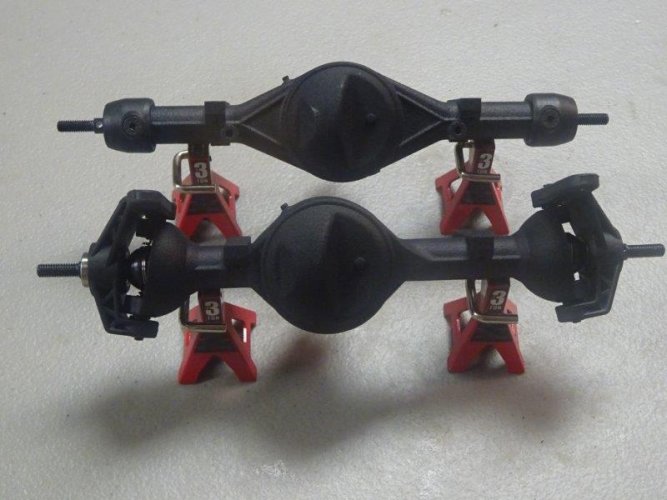
At the same time I came across that crappy, beat-up Blazer body that found its way onto CMAX #1 a couple of months ago, I also stumbled upon a nice blue and white Blazer body in the classifieds here. Which gave me an idea...
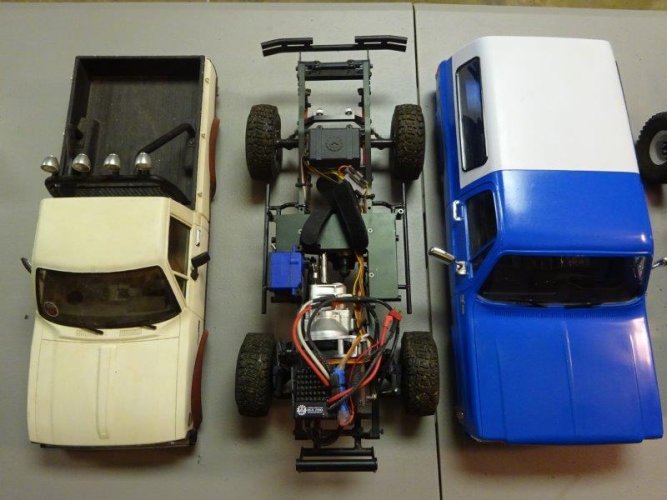
You can probably see where I'm going with this, even if you didn't see the thread I put up a few weeks ago in the TF2 section. Why not take the Mojave 2 body that I finished when it was first released, put it on a CMAX, and put the blue and white Blazer body on the TF2? That would give me a TF2 Blazer and a CMAX Blazer, plus a TF2 Hilux/Mojave and a CMAX Hilux/Mojave. So that's exactly what I did.
This idea was only slightly less lazy than CMAX #1, because I actually did all of the paint and detailing on this body myself (granted it was a couple of years ago, but who's counting). With other projects going on at the same time, I decided to outsource chassis and axle assembly to Roo. He's getting pretty good at it by now:
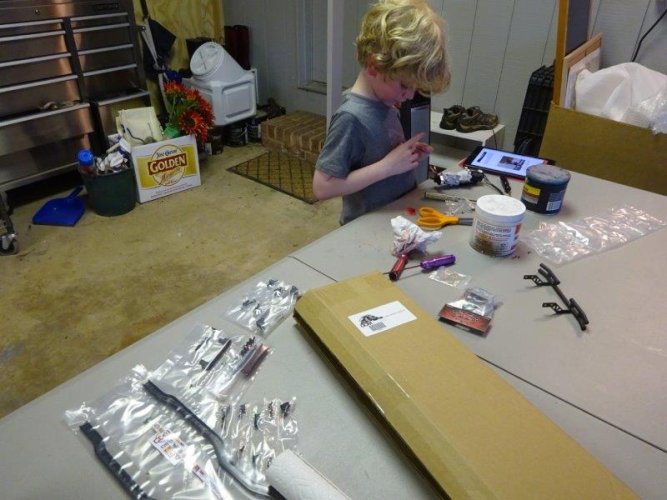
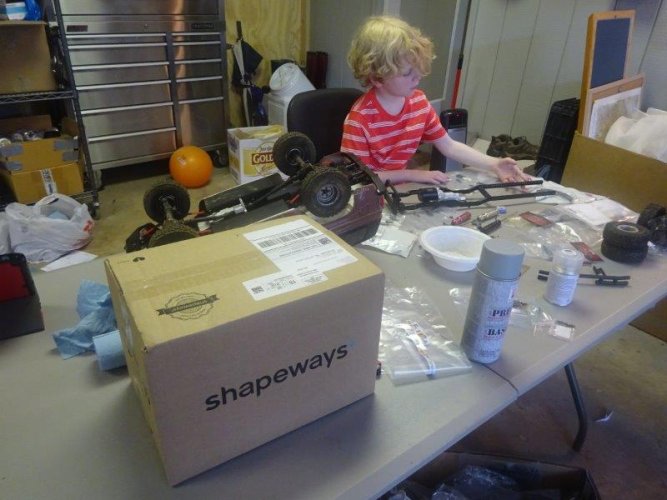
The story behind the 152s is fun. When we originally developed the NCYotas, we wanted to keep the axles as narrow as possible for maximum tire tuck under the Hilux/Mojave and LC70 bodies, which are quite narrow. Because the first version of the NCYotas was made for the TF2, the location of the front leaf and shock mounts on the TF2 chassis essentially eliminated the possibility of making a bolt-on axle any narrower than stock (approx. 170mm pin-to-pin) without sacrificing steering. Why, you ask? The width of the axles on the TF2 chassis is dictated by the stock leaf and shock mounts, which in turn is dictated by the width of the chassis rails. If we narrowed the axles between the leafs and the knuckles, we'd lose steering. But trying to narrow the axles by moving the leafs and shock mounts inward would require major modifications to the shock and suspension mounts, and even then, it's not clear that it could work. Here's a pic to show you what I mean:
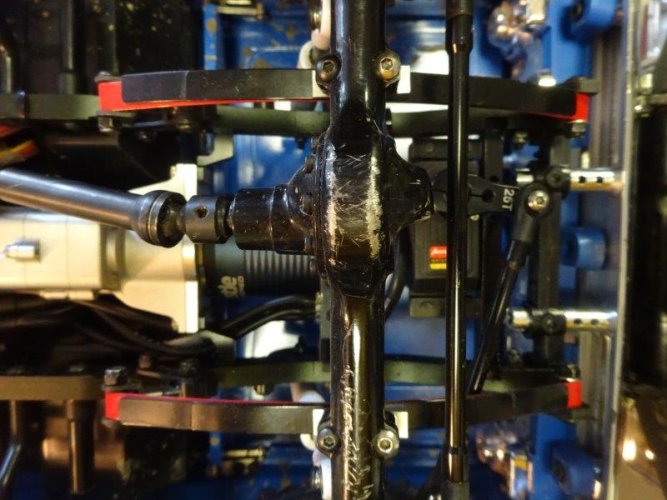
Which brings us to the CMAX. The CMAX rails are much narrower than stock TF2 rails. If you look at a similar view from underneath, you can see that mounting standard-width (i.e., RC4WD and Tamiya width) leafs to the CMAX rails requires placing the leafs fully outside the rails:
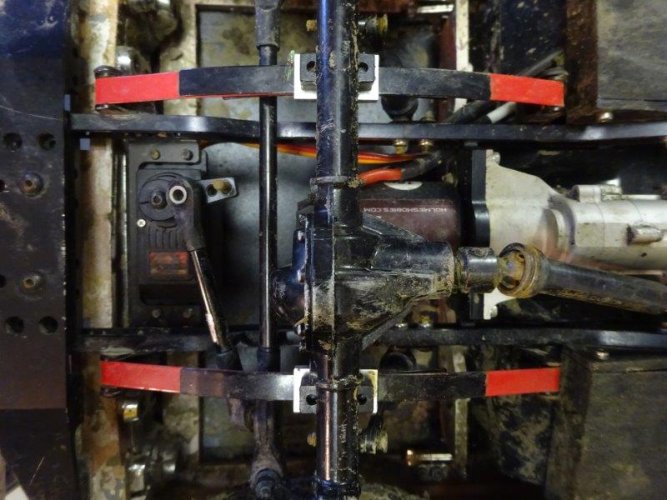
That meant we had room to narrow the front leaf and shock mounts simply by moving the leafs closer to the rails. That in turn would allow us to narrow the axles without compromising steering. Through our collaboration with GCM, we were able to figure out the perfect width to fit these axles under the Hilux/Mojave and LC70 bodies - 152mm pin-to-pin. We get to that measurement by trying multiple different wheel/tire combos on both the Hilux/Mojave and LC70 bodies with a variety of different axles. By moving the leaf and shock mounts inward, we could leave the spacing between the leafs and knuckles in tact, which gave us full steering even with the narrow axles. The rear leaf mounts didn't need to change, so we left them as is. This view of the front and rear axles shows the different offsets for the front vs rear leaf mounts:
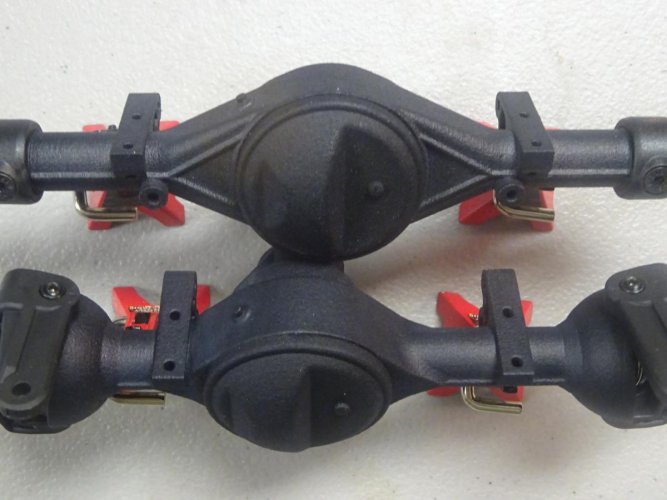
To make all of this possible on the chassis side, GCM created these new front leaf mounts:
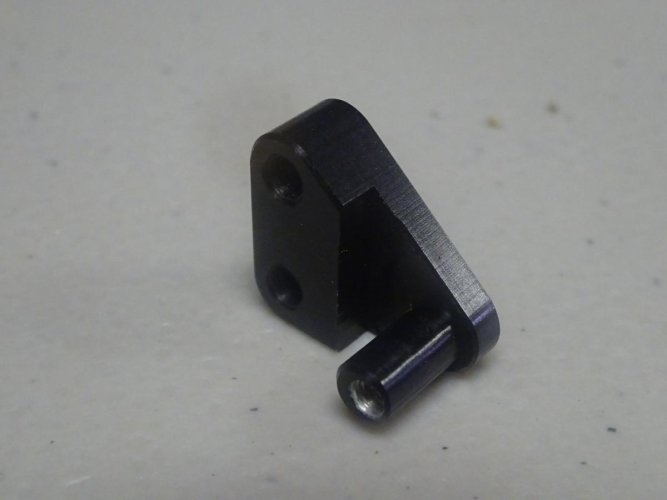
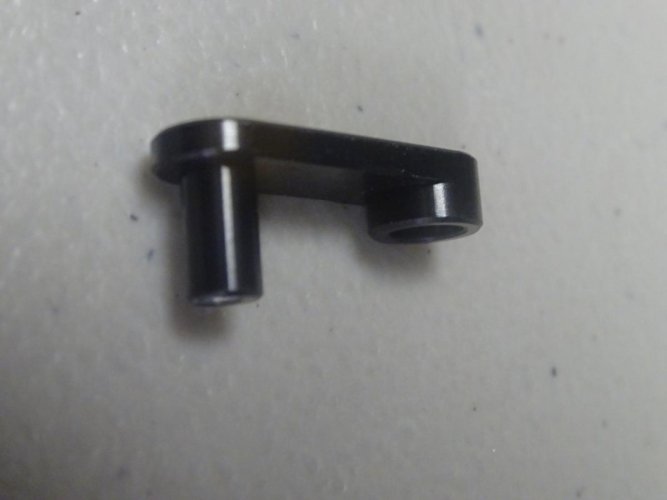
Together, these little mounts place the front leaf almost directly under the CMAX chassis rails. In fact, GCM liked the setup so much, they decided to use this on their new TMX axle housings even at wider axle widths, as seen here under that amazing Comp Toy:
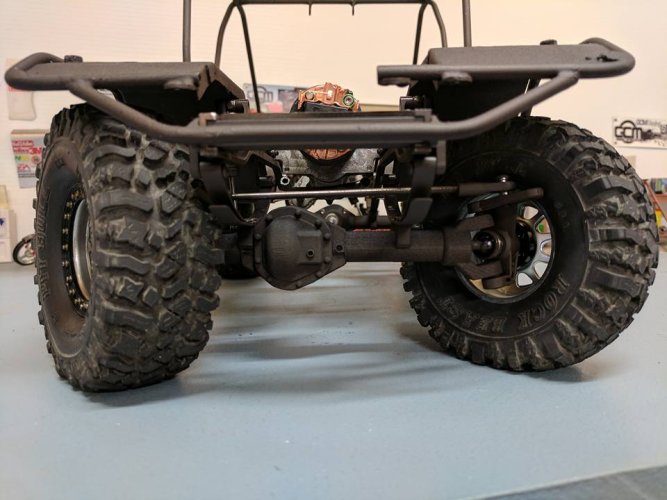
So that's the story of how the 152s came to be. In the next few days, I'll update this thread with some more info on the build and setting up the narrow leafs with the 152s, as well as some details from the body. And within the next week or two, we should be ready to announce a cool new product specifically for this Hilux/Mojave/CMAX combination. So stay tuned...

At the same time I came across that crappy, beat-up Blazer body that found its way onto CMAX #1 a couple of months ago, I also stumbled upon a nice blue and white Blazer body in the classifieds here. Which gave me an idea...

You can probably see where I'm going with this, even if you didn't see the thread I put up a few weeks ago in the TF2 section. Why not take the Mojave 2 body that I finished when it was first released, put it on a CMAX, and put the blue and white Blazer body on the TF2? That would give me a TF2 Blazer and a CMAX Blazer, plus a TF2 Hilux/Mojave and a CMAX Hilux/Mojave. So that's exactly what I did.
This idea was only slightly less lazy than CMAX #1, because I actually did all of the paint and detailing on this body myself (granted it was a couple of years ago, but who's counting). With other projects going on at the same time, I decided to outsource chassis and axle assembly to Roo. He's getting pretty good at it by now:


The story behind the 152s is fun. When we originally developed the NCYotas, we wanted to keep the axles as narrow as possible for maximum tire tuck under the Hilux/Mojave and LC70 bodies, which are quite narrow. Because the first version of the NCYotas was made for the TF2, the location of the front leaf and shock mounts on the TF2 chassis essentially eliminated the possibility of making a bolt-on axle any narrower than stock (approx. 170mm pin-to-pin) without sacrificing steering. Why, you ask? The width of the axles on the TF2 chassis is dictated by the stock leaf and shock mounts, which in turn is dictated by the width of the chassis rails. If we narrowed the axles between the leafs and the knuckles, we'd lose steering. But trying to narrow the axles by moving the leafs and shock mounts inward would require major modifications to the shock and suspension mounts, and even then, it's not clear that it could work. Here's a pic to show you what I mean:

Which brings us to the CMAX. The CMAX rails are much narrower than stock TF2 rails. If you look at a similar view from underneath, you can see that mounting standard-width (i.e., RC4WD and Tamiya width) leafs to the CMAX rails requires placing the leafs fully outside the rails:

That meant we had room to narrow the front leaf and shock mounts simply by moving the leafs closer to the rails. That in turn would allow us to narrow the axles without compromising steering. Through our collaboration with GCM, we were able to figure out the perfect width to fit these axles under the Hilux/Mojave and LC70 bodies - 152mm pin-to-pin. We get to that measurement by trying multiple different wheel/tire combos on both the Hilux/Mojave and LC70 bodies with a variety of different axles. By moving the leaf and shock mounts inward, we could leave the spacing between the leafs and knuckles in tact, which gave us full steering even with the narrow axles. The rear leaf mounts didn't need to change, so we left them as is. This view of the front and rear axles shows the different offsets for the front vs rear leaf mounts:

To make all of this possible on the chassis side, GCM created these new front leaf mounts:


Together, these little mounts place the front leaf almost directly under the CMAX chassis rails. In fact, GCM liked the setup so much, they decided to use this on their new TMX axle housings even at wider axle widths, as seen here under that amazing Comp Toy:

So that's the story of how the 152s came to be. In the next few days, I'll update this thread with some more info on the build and setting up the narrow leafs with the 152s, as well as some details from the body. And within the next week or two, we should be ready to announce a cool new product specifically for this Hilux/Mojave/CMAX combination. So stay tuned...


































